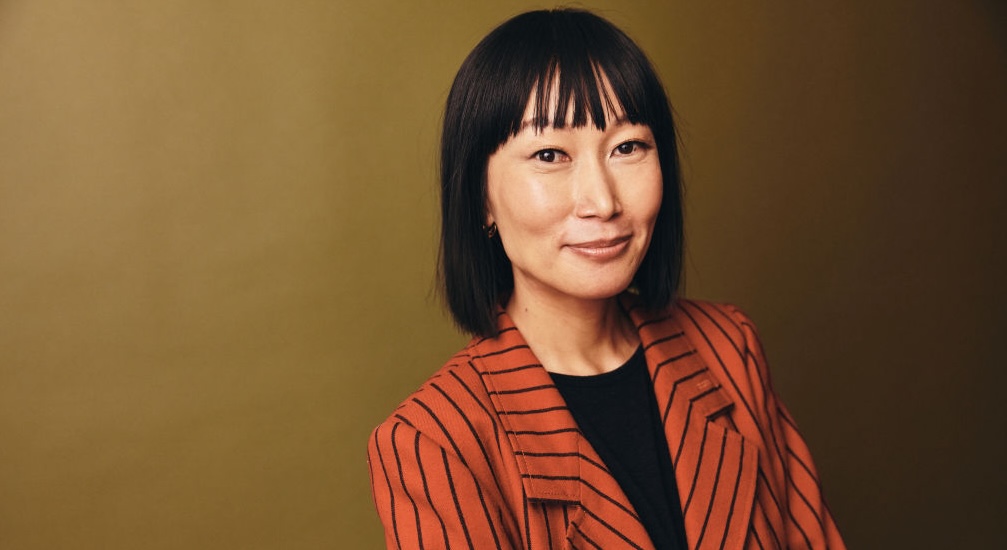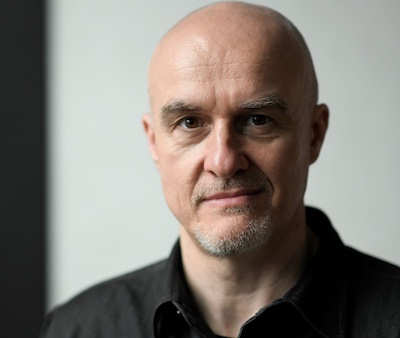From “Kill Bill” to Martin Scorsese to “Shōgun”: Producer Eriko Miyagawa on Her Hero’s Journey
A lucky break followed by a realization that the road ahead still won’t be a smooth march toward success is a pattern recognizable by many in the entertainment industry and beyond. The fortuitous happenstance for Eriko Miyagawa came in the form of an email saying that Quentin Tarantino was shooting in Beijing and looking for someone fluent in English and Japanese. This felt like an emphatically good turn of fortune for the smart, ambitious Miyawaga.
An intern at Radio Free Asia in Washington D.C. at the time, Miyagawa bought a one-way ticket to China. “It was 2002, and the job market was tough. I had nothing to lose,” she recalls over green tea in Tokyo.

The gamble paid off, and she landed a gig translating on the set of Kill Bill. Though much of the film takes place in Japan, it was the first foreign production to shoot at Beijing Film Studio, a sharp shift from the Chinese Communist Party propaganda fare it was known for.
“It was like the best summer camp,” she says of her experience on Kill Bill, thinking at the time, “If you can make a living doing this, I’m in.”
The Last Samurai also came out the following year; Miyagawa felt that Japan was in the spotlight and that would be a way into the industry. However, the rest was not quite history.
Inspired by Miramax, Christine Vachon’s Killer Films, and what Todd Haynes was doing, she moved to New York to learn how to produce. Fierce competition, visa issues, and unpaid internships pushed her into advertising before she decided to head back to China.
Born in Kyoto, Japan, her father’s work saw her spend sections of her childhood in Indonesia, Dubai, and Thailand, picking up English and getting a feel for living across distinct cultures. After high school in Yokohama, she headed for Georgetown University, partly inspired by the trailblazing work of Sadako Ogata, the first female UN High Commissioner for Refugees, who had taken a Master’s there. Miyagawa later produced an independent film in Japan, Cast Me If You Can, directed by her son, Atsushi Ogata.
As part of Miyagawa’s culture and politics course at Georgetown, she studied Chinese for four years, a major advantage when she returned to Beijing as its film industry burgeoned and opened up to the world.
“It was like the Wild West; it was the time when everyone was coming and opening up offices. All this crazy architecture was popping up, and almost overnight, the earning power of Chinese people was jumping.”
Freelancing, she worked on projects including Dreamworks’ The Kite Runner (2007), directed by Marc Forster, with Xinjiang province standing in for Afghanistan.
“It’s kind of unthinkable now. But at the time, it made sense. China was this big, rich place with diverse locations and high-level production crews. You go to the western part of China, which looks like Afghanistan. People look like they’re from there as well.”
Returning to Japan in 2008, she began to do some pre-production work for Silence, a passion project that Martin Scorsese had been trying to realize for decades. It would take a few more years before it finally came to fruition, filming in Taiwan in no small part due to its generous production subsidies.
“I was a point person for all things Japan. I was supposed to be producing, but I just really wanted to be near Marty Scorsese. I sort of inserted myself as his interpreter on set so I could sit next to him every day, watching the monitor. It was unbelievable.”
Shortly afterward came another project that did not initially run smoothly through the production pipeline. It was in 2016 when she was contacted about FX’s new take on Shōgun, with plans to shoot in the UK and Japan under a different production team. Revived under the watchful eye of showrunner Justin Marks and his wife and executive producer Rachel Kondo, the show began shooting in 2021 during Covid in Vancouver, with production incentives again playing a major role in the choice of location.
Much has been said about the show’s attention to detail and cultural authenticity, something that Miyagawa, along with star and fellow producer Hiroyuki Sanada, were at the heart of.
In addition to the intricate sets and costumes, language was inevitably a major challenge in a show based on a book written in English, a script originally in English but with around 70% of the dialogue in Japanese being made by a crew that, for the most part, didn’t understand it. Then factor in that Japanese is extremely context-heavy and that the language of the period the show is set in is as different to modern Japanese as Shakesperean English is to contemporary American English.
“If the dialogue had been in classical Japanese, then even audiences in Japan wouldn’t understand it all. Many direct translations from English also don’t work. So, you need to pull back and adjust all these nuances.”
Another linguistic example of the uncompromising eye for detail in the show is that the handwriting in letters and other documents was made to look like that of the original figures the characters are based on.
“There’s a Japanese calligraphy teacher in Vancouver who researched the handwriting of Hosaka Gracia – the model for Mariko (Anna Sawai) – and found that some of her scrolls had been preserved. And she would try to imitate that. Also, there are some scrolls from Tokugawa Ieyasu (the warlord on whom Sanada’s character is based). The writing might not even be shot in the end, but it’s a beautiful showcasing of how much everybody cared.”

Despite getting the feeling that she was working on something truly special as the shoot progressed, Miyagawa still didn’t imagine that a show set in feudal Japan that “doesn’t have as many action sequences as people might expect, it’s more political mind games, and we even have poetry competitions,” with the majority of its dialogue not in English, would win a record-breaking 18 Emmys.
A single mother, Miyagawa also hails the supportiveness of the production in accommodating her two young children out to Canada, and even her parents to take care of them until they settled in. Making full use of their time there, Miyagawa’s daughter made her screen debut in episode six as the young Ochiba, played by Fumi Nikaido as an adult.
Season two and three of Shōgun are already in development, with some shooting in Japan being considered, which would intend to use recently introduced production incentives.
“I’m really excited that Japan has taken big steps forward regarding this new subsidy that offers up to 50%. I hope they see great results and that they will take it even further down the road because I think Japan has a great potential to be a production center for shows that are based or even not based in Japan.”
Miyagawa is developing two of her own projects, both of which have Japanese and international elements, though she doesn’t ultimately want to limit herself to stories linked to her homeland.
“It’s an exciting time in Hollywood. I feel like there’s a shift with shows like Shōgun and Squid Game. There’s much more appetite for broader storytelling for a global audience.”
Featured image: “SHOGUN” — “A Stick of Time” — Episode 7 (Airs April 2) Pictured: Moeka Hoshi as Usami Fuji. CR: Katie Yu/FX
For more interviews with filmmakers and producers taking big swings in Asia, check these out:
From Mumbai to Batam: The Unexpected Journey of Dev Patel’s “Monkey Man”
Benetone Films Co-Founder Kulthep Narula on Taking Thailand’s Film Industry to the Next Level
Pioneering Producer Auchara Kijkanjanas on Animating Thailand’s Entertainment Industry
Crime, Crazy Rich Rom-Coms, and More: Producer Janice Chua on Bringing Asian Stories to the World
Featured image: “SHOGUN” — “The Eightfold Fence” — Episode 4 (Airs March 12) Pictured: Anna Sawai as Toda Mariko. CR: Katie Yu/FX



